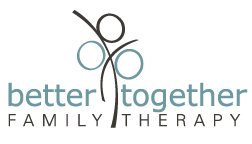What's Really Going On? Wisdom from our Teen Therapist
With the struggle of the pandemic and a slow start to reopening, everyone keeps talking about our “new normal”. Though this describes the state of our transition, I feel we may have overdosed on the phrase. I mean, what even is normal?
Normal is routine. It is what we know, live, and by most accounts, can predict. We crave the structure. We grieve when we are forced out of our comfort zone and into the unknown. We attach ourselves to our schedules, our jobs, to objects, people, places, memories, and emotions.
And in this desire for normalcy, we forget that life is a series of chapters in constant transition. When things change, we adapt. This is our means of survival. Trying to achieve permanent happiness and comfort is like constantly seeking balance but never really knowing if we’ve found it. The search never ends.
I’ve processed a lot of emotions with clients around schools being closed, being separated from friends, sorting through financial troubles, working through conflict while being stuck at home with family members, you name it. And trust me, I hear you. These shifts in routine and new circumstances are not within our “normal”.
With the uncertainty of the entire pandemic, our brains naturally cling to what we know because it is the only way we can try to make sense of things. But, as we spend more time grieving our normal, we become less focused on what issues are really calling our attention. Just maybe, we are moving into a space where we can start to unpack what is actually going on within us.
The question I encourage you to ask yourself when you are stuck in this emotional cycle is: What in my normal routine is revolved around love and what is revolved around attachment?*
My guess is that you will begin to find your feelings reflect unmet needs or desires, rather than actually missing that part of your “normal”.
Attachment is a feeling of fondness, an extension of something, that is difficult to remove. Love can feel similar, but is less possessive. It is patient, free-flowing, and always seeking the greatest good. Many times we find ourselves attaching to things and calling it love. In order to find the solution to healing, we must first seek what is missing in ourselves.
The things we attach to typically serve a purpose or fill a void. While this is human nature, we often only notice it in its absence.
What are you truly seeking? Is it happiness? Stability? Affection?
What makes it so difficult to adjust to a life without this attachment?
You may not be grieving the actual thing, but rather the function it was serving. Ask yourself what brings you joy. What brings you peace? What calms the storm in your mind or your heart? If you aren’t sure, that is a great place to start. You will begin to reveal what it is you truly want and need, and let go of whatever is no longer serving you.
They say some things are for life, while others, a season. Nature never ceases to teach us these lessons. As plants die and grow back, branches bend with the wind, and the ground softens itself for the rain; we too are made for change.
As we re-enter the world, let’s take time to evaluate what it is that we really want from this opportunity for change. Let’s decide how to come out of this not only stronger, but wiser. Often times, it isn’t change that causes us pain, but the suffering that occurs in the transition.
I encourage you, be gentle with yourself. Be patient. You will make it through this. We all will.
*”Attachment” in this post refers not to attachment theory, but to the general use of the term attachment to mean an unwillingness to let something go.
